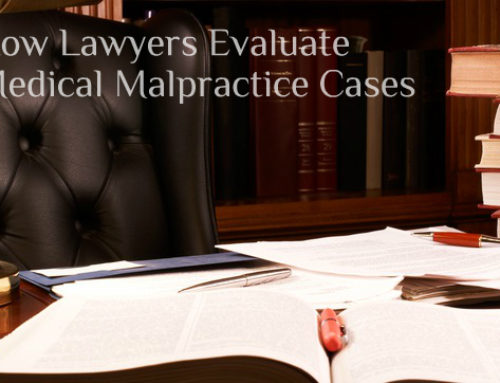You’ve made our appointment. You’ve signed our papers. You’ve told us the story of your case. Good to go? No, not yet. We need the medical records.
We need to know what your doctor said, and what you told him, as reflected in his notes. And we want to know his opinion of what ails you and why, and we want to know when he says you are well enough to return to work. What he says about your need for future surgery. We need it from the horse’s mouth.
Your testimony is important, but in most instances, the case will be won or lost by the evidence in your medical chart, and what the medical experts have to say about it.
For example, a patient may claim his doctor failed to diagnose an illness until irreversible harm took place. Or that the doctor failed to order a crucial diagnostic test. On the other hand, the doctor claims the test was ordered, or that the patient ignored his own symptoms. Perhaps the patient says an injury was caused by the accident, but the records disclose that the patient complained of these same symptoms six months before the date of the crash.
How does a jury decide who is right? Answer: the medical records. A contemporaneous record of what happened, created the way medical records are typically made, has more chance of swaying the jury than something contrary that is said in court after the fact.
It’s not impossible for a health care provider to alter records, but it’s a dangerous tactic and we have ways to expose this. Forging medical records is therefore the exception, not the rule.
How do we get your records? Sometimes we may ask you to get them. Other times, we obtain them on your behalf, using a formal request letter and your written consent. Or we may simply walk in the door with an authorization in hand. Regardless of the approach, we comply with two sets of privacy laws–state and federal.
Understanding these laws, and how they affect our right to collect your records, is not as complicated as it sounds. While charts highlight the legal complexities, for the most part, armed with the right piece of paper, we won’t have trouble gathering relevant portions of your chart.
Adopted in 2003, the HIPAA Privacy Rule created new national standards, giving patients more control over their health data and helping protect patient privacy. Requesting one’s own records is commonplace today. Don’t be nervous about it. In general, all that is needed is for the patient to provide written authorization that is signed and dated, identifies whose records are requested and to whom they are to be provided, and specifies how long the authorization is effective (up to one year). In many instances, health care providers have their own forms for patients to sign, and they can provide this form to you when the records request is made.
In 2016, no one will challenge your right of access, or demand to know why you want the records before releasing them. And no one will say “no” on the basis that they haven’t been paid for their medical services. Finally, they are not allowed to charge you an exorbitant copying or delivery fee. If they do any of these things, or otherwise try to say no to your request for data that is legally yours to obtain, you know who to contact. We’re here to help.












